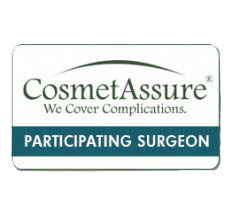As you move through your 30s and 40s, you may start noticing changes in your skin, especially around the lower half of your face. Laxity in the jawline and cheeks along with the appearance of deeper wrinkles, can gradually alter the facial structure. While a consistent skincare routine can help maintain the overall health of your skin, it may not address the sagging or loss of definition caused by aging.
A facelift can help lift and contour the face and give you a more refreshed appearance. This surgical approach focuses on reducing the appearance of sagging skin and wrinkles, particularly in the mid-to-lower face and neck. At Tarola Plastic Surgery in Murfreesboro, TN, we offer facelifts to improve facial contours and create a smoother, more rejuvenated look.
What Is a Facelift?
A rhytidectomy, commonly known as a facelift, is a surgical procedure that resolves certain visible signs of aging in the face and neck. It carefully lifts and repositions underlying tissues to reduce sagging and smooth contours in the face. This technique can be used for loose skin, deep folds, and other age-related changes.
Types of Facelift Surgery
Full Facelift
A full facelift corrects more advanced signs of aging in the mid-to-lower face and neck. We reposition deeper tissues and remove excess skin which resolves sagging, deep wrinkles, and loss of definition around the jawline. It’s an option for patients who want comprehensive rejuvenation and more noticeable results. We often use the full facelift for older patients or those with considerable aging in the facial tissues and muscles.
Neck Lift
A neck lift is ideal for patients with loose skin, vertical bands, or excess fat in the neck area. It refines the neck contours by tightening underlying muscles, removing excess skin, and sometimes addressing stubborn fat. This procedure is done on its own or with a facelift.
What Can a Facelift Address?
- Sagging Skin: After your mid-20s, collagen production reduces by 1% each year. This is part of what causes the skin to sag in the lower face and neck. A facelift can lift and reposition this skin for a firmer and smoother appearance.
- Deep Folds: Nasolabial folds, or the lines that run from the nose to the corners of the mouth, can become more pronounced with age. A facelift softens these folds by tightening the skin and repositioning underlying tissues.
- Jowls or Loss of Jawline Definition: Jowls can blur the natural definition of the jawline and make the face look less structured. Tightening the skin and underlying tissues in this area helps bring back a sharper, more defined profile.
- Hollowed or Sunken Cheeks: A hollowed appearance in the mid-face often results from a loss of volume beneath the skin. Surgical techniques allow for the repositioning of these tissues to lift these areas and make them appear more youthful.
- Excess Chin Fat and Skin: Excess fat or loose skin under the chin can contribute to a “double chin” or undefined neck profile. A facelift and neck lift combined can reduce these concerns. Sometimes these surgeries are combined with other techniques such as liposuction.
Preparing for Your Facelift
Your Initial Consultation
During your consultation, we will listen to your concerns and the areas you want to adjust. We will use this and a detailed medical history to determine if you are a candidate for facial surgery. We will also examine your face and neck to assess skin quality, muscle tone, and areas of concern. If you have any questions about the process, be sure to ask them at your consultation. By the end of the first meeting, you should have a complete understanding of the procedure, recovery process, and expected results.
A Few Pre-Surgery Guidelines
In preparation for surgery, we’ll provide you with a pre-surgery packet outlining everything you need to know. This includes a list of medications and supplements to avoid before your facelift procedure since some can increase bleeding risks. You’ll also receive post-operative instructions such as how to care for your incisions and what activities to avoid during recovery. Reviewing these materials thoroughly and following them carefully is part of the process of getting the best results.
The Facelift Procedure
Your facelift procedure is performed as an outpatient surgery at a fully accredited surgical center. Depending on your needs and preferences, we’ll use general anesthesia to keep you comfortable. Incisions are typically placed along the hairline and around the ears, allowing us to lift and reposition the underlying tissues while minimizing visible scarring. The surgery generally takes a few hours, after which you’ll spend time in a recovery area before being discharged.
Recovering From Your Facelift
After your surgery, you can expect some swelling, bruising, and mild discomfort, all of which are normal parts of facelift recovery. You may also feel tightness in the treated areas, which will gradually subside as the healing process progresses. Most patients feel well enough to resume light daily activities within a week, but more strenuous tasks should be avoided until cleared by Dr. Tarola. A follow-up appointment will be scheduled to monitor your progress and address any concerns.
As swelling diminishes, you’ll begin to notice the improved contours and smoother appearance achieved by your surgery. While the results won’t be fully visible until the healing process is complete, many patients appreciate the subtle but impactful changes that happen early on.
A Few FAQs About Facelifts
Who Is a Good Candidate for Facelift Surgery?
A rhytidectomy is typically best for patients experiencing visible signs of aging in the face and neck such as sagging skin, deep folds, or jowls. Candidates should be in good overall health, non-smokers, and have realistic expectations for the outcome of the surgery. While age isn’t the only determining factor, skin elasticity and bone structure are both important for getting the best results.
How Long Will My Facelift Results Last?
Results from a facelift surgery can often last 10 years or more, but longevity depends on factors like skin quality, genetics, and lifestyle habits. While the natural aging process will continue, maintaining a healthy lifestyle and good skincare routine can help preserve your results for longer. Sun protection and avoiding smoking are particularly beneficial in prolonging the improvements.
Will My Facelift Look Natural?
A well-performed facelift surgery focuses on repositioning the underlying tissues and tightening the skin without pulling too tightly. This approach avoids an overdone appearance, leaving you with a refreshed and natural look. The goal is to enhance your features while maintaining the unique characteristics of your face.
What Are the Risks Associated With Facelift Surgery?
Like any surgical procedure, a facelift carries some risks including infection, bleeding, and temporary nerve weakness. Other potential risks include poor wound healing, visible scarring, or asymmetry. Choosing a qualified and experienced surgeon and following all pre and post-operative instructions can minimize these risks.
How Does a Facelift Compare to Non-Surgical Facelift Options?
A facelift procedure provides more dramatic and longer-lasting results than non-surgical treatments like fillers or skin-tightening devices. Non-surgical options are best for patients with mild skin laxity or those seeking temporary improvement. Surgery addresses the deeper structures of the face, whereas non-invasive treatments focus primarily on the skin’s surface and offer subtle enhancements.
Can a Facelift Be Combined with Other Procedures?
A facelift procedure can be complemented by treatments like eyelid surgery (blepharoplasty), brow lifts, or injectables to achieve more comprehensive rejuvenation. An eyelid surgery can refresh tired-looking eyes while dermal fillers can restore lost volume. Combining procedures is a common way to address multiple areas of concern in one surgical plan.
Will I Have Scars After a Facelift?
Incisions are strategically placed around the hairline and ears to minimize visible scarring. Over time, scars typically fade and become less noticeable, blending naturally with the surrounding skin. Following post-operative care instructions and protecting the area from sun exposure can help scars heal more effectively.
About Our Practice
Dr. Nicholas Tarola brings his expertise in cosmetic and reconstructive surgery for the face to every procedure. After earning his medical degree from Jefferson Medical College in Philadelphia, he completed his surgical residency at Thomas Jefferson University and advanced plastic surgery training at Vanderbilt University Medical Center. Now based in Murfreesboro, Dr. Tarola is known for his focus on cosmetic face, breast, and body surgery, including advanced techniques for restoring aesthetics after pregnancy and aging. Supported by a compassionate and skilled team, he is committed to excellent results and exceptional care for every patient.
Reduce Signs of Aging With a Facelift
A facelift can treat everything from sagging skin to deep folds, providing a smoother, more refreshed appearance. At Tarola Plastic Surgery, we perform each procedure with precision to enhance your natural features while maintaining a balanced and youthful look. If you’re ready to explore your options for a facelift in Murfreesboro, TN, call us at (615) 624-8914 or contact us through our online form to schedule your consultation.




